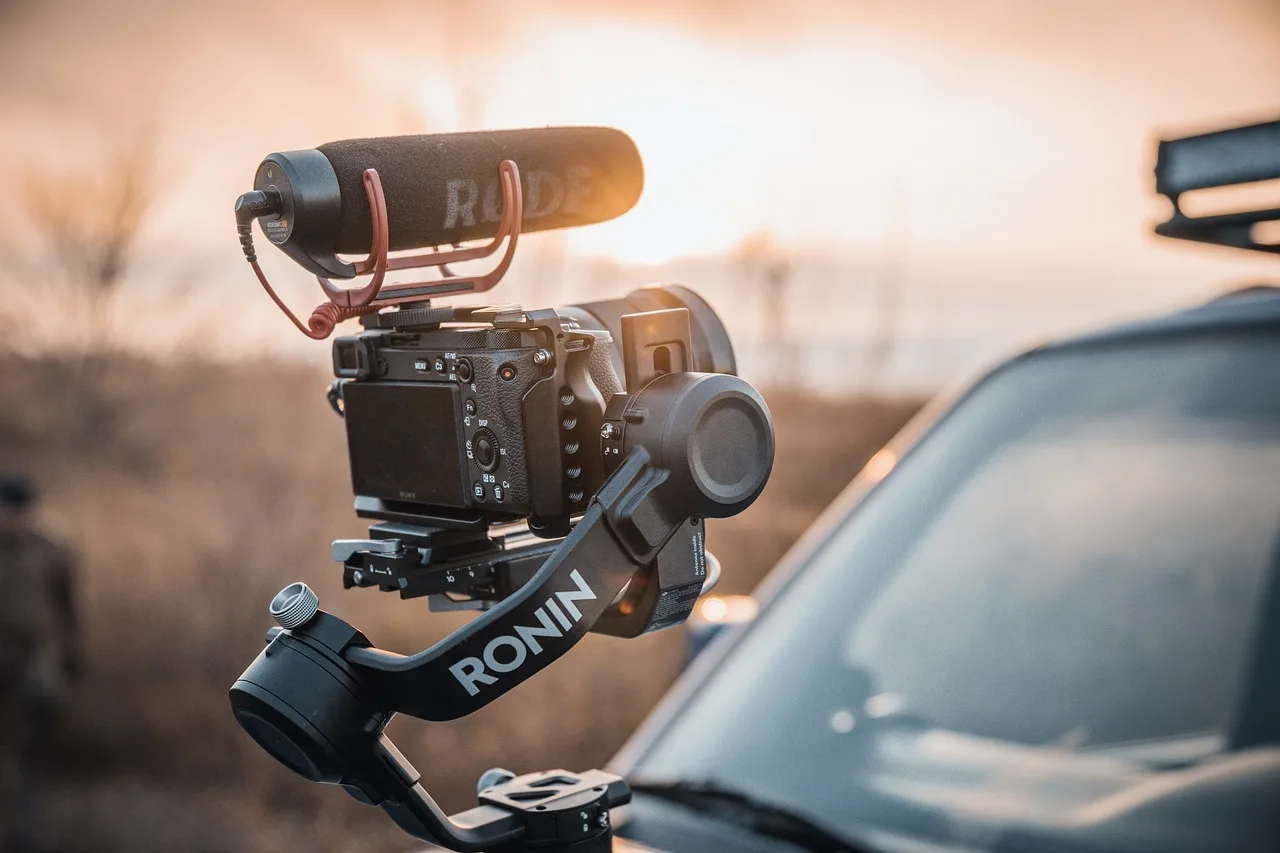Introduction
Vlogging, short for video blogging, involves creating and sharing video content on platforms like YouTube. Vloggers typically document their daily lives, share experiences, or focus on specific topics, engaging with their audience through video format.
what is vlogging?
A Window into the World
Vlogging, a fusion of “video” and “blogging,” has become a prevalent form of online expression and content creation.It provides individuals with a dynamic platform to share their lives, experiences, and expertise in a video format.
Let’s delve into
what is vlogging? and how it has evolved in the digital landscape.?
Uncovering the World of Vlogging
Vlogging, a portmanteau of “video” and “blogging,” has emerged as a ubiquitous and influential medium in the realm of online content creation.
At its core, vlogging involves the creation and sharing of video content, offering a unique and engaging way for individuals to express themselves and connect with audiences worldwide.
Defining Vlogging and Its Evolution
Vlogging, short for video blogging, transcends traditional written forms of expression by leveraging the power of video.It finds its roots in the world of blogging, where individuals shared their thoughts and experiences through written narratives.
The evolution of technology and the advent of video-sharing platforms have propelled vlogging into the spotlight, allowing creators to weave compelling stories through the lens of a camera.

The Tools of the Vlogging Trade
Leaving on a vlogging journey requires a basic toolkit.
- A camera, be it a dedicated video camera,
- a smartphone,
- or a webcam,
serves as the primary instrument for capturing moments.Complementing this, video editing software enables vloggers to refine their content, adding a layer of creativity through music, effects, and seamless scene transitions.
Diverse Genres Within Vlogging
Vlogging caters to a diverse range of content genres, ensuring there’s something for everyone.
- Lifestyle vlogs invite viewers into the daily lives of creators, while
- travel vlogs serve as virtual passports to various destinations.
- Educational vlogs disseminate knowledge on specific subjects, and beauty vlogs offer insights into makeup techniques and product reviews.
- Gaming vlogs, on the other hand, foster communities around shared gaming experiences.
Platforms and the Global Reach of Vlogging
YouTube stands as the epicenter of the vlogging phenomenon, acting as a virtual stage for countless creators.
However, vlogs extend their reach to platforms such as TikTok, Instagram, and Facebook, enabling creators to connect with audiences across the globe.
This widespread accessibility underscores the universal appeal of vlogging, transcending geographical boundaries.
Cultivating the Vlogging Culture
Vlogging has given rise to a distinctive digital culture characterized by personal connections between creators and viewers.The authenticity and relatability embedded in vlogs forge a sense of community, with audiences feeling intimately connected to the lives of their favorite creators.
This symbiotic relationship contributes to the enduring popularity and impact of vlogging as a medium for self-expression.
Challenges in the Vlogging Landscape
While vlogging offers a plethora of opportunities, it comes with its set of challenges.Consistency in content creation, maintaining audience engagement, and navigating privacy concerns are considerations that vloggers must grapple with.
Striking a balance between personal and public life becomes a delicate art that requires thoughtful Vlogging encompasses a diverse range of content types, catering to various interests and preferences.
Types of Vlogging
Here are some common types of vlogging:
1.Lifestyle Vlogging:
– Focuses on the daily life and experiences of the Vlogger.
– Includes activities, routines, and personal reflections.
2.Travel Vlogging:
– Documents journeys, adventures, and visits to different locations.
– Showcases cultures, landscapes, and unique experiences.
3.Educational Vlogging:
– Shares knowledge on specific subjects or skills.
– Tutorials, explanations, and informative content fall into this category.
4.Beauty and Fashion Vlogging:
– Features makeup tutorials, fashion hauls, and style advice.
– Reviews of beauty products and clothing may also be included.
5.Gaming Vlogging:
– Involves commentary and recording of gameplay.
– Often includes reviews, tips, and discussions related to gaming.6.Food Vlogging:
– Showcases culinary experiences, recipes, and restaurant reviews.
– Offers a visual journey through different cuisines.
7.Fitness Vlogging:
– Follows the vlogger’s fitness journey, workouts, and health tips.
– Can include diet plans, exercise routines, and progress updates.
8.Tech and Gadget Vlogging:
– Reviews and explores new technology and gadgets. – Provides insights into the latest tech trends and innovations.
9.Family Vlogging:
– Centers around family life, parenting, and relationships.
– Often involves sharing family activities and milestones.
10.Motivational and Inspirational Vlogging:
– Focuses on self-improvement, motivation, and personal growth.
– Shares inspirational stories, advice, and positive affirmations.
11.Documentary-style Vlogging:
– Takes a more in-depth and storytelling approach to real-life events.
– Explores specific topics or social issues.
12.Review Vlogging:
– Offers critiques and opinions on various products, services, or experiences.
– May include reviews of movies, books, gadgets, and more.
13.DIY and Crafting Vlogging:
– Showcases do-it-yourself projects and creative endeavors.
– Provides step-by-step guides for crafts and DIY activities.
14.Reaction Vlogging:
– Involves the vlogger’s reactions to various videos, music, or trends.
– Offers commentary and analysis in real-time.
15. Challenge and Experiment Vlogging:
– Takes on challenges or experiments, often suggested by viewers.
– Provides entertaining and sometimes humorous content.These are just a few examples, and many vloggers blend multiple styles to create a unique and engaging content mix.
The versatility of vlogging allows creators to explore and experiment with different formats based on their interests and the preferences of their audience.
What is the purpose of vlogging?
The purpose of vlogging varies among creators, but some common objectives include:
1.Self-Expression:
– Vlogging provides a platform for individuals to express themselves creatively and share their thoughts, experiences, and perspectives.
2.Community Building:
– Vloggers aim to connect with an audience, building a community around shared interests, experiences, or values.
3.Documentation and Memory Keeping:
– Vlogging serves as a digital diary, documenting life events, travels, and milestones, creating a lasting record for both the creator and their audience.
4.Entertainment:
– Many vlogs are crafted to entertain viewers, offering engaging content, humor, or interesting insights into the creator’s life.
5.Education and Information Sharing:
– Educational vlogs aim to share knowledge, skills, and insights on specific subjects, providing valuable information to viewers.
6.Influence and Inspiration:
– Vloggers may aspire to influence or inspire their audience, whether through lifestyle choices, motivational messages, or positive role modeling.
7.Professional Growth:
– For some, vlogging serves as a stepping stone to professional opportunities, such as partnerships, sponsorships, and collaborations.
8.Creative Outlet:
– Vlogging allows creators to explore and showcase their creativity, whether through storytelling, cinematography, or editing skills.
9.Monetization:
– Vlogging can be a source of income for creators through ad revenue, sponsorships, and partnerships with brands.
10.Networking:
– Vloggers often use their channels to connect with other creators, industry professionals, and like-minded individuals, fostering collaborations and partnerships.
11.Personal Development:
– Regular vlogging can contribute to personal development by improving communication skills, building confidence, and encouraging self-reflection.
12.Social Impact:
– Some vloggers focus on raising awareness about social issues, advocating for causes, or promoting positive change through their platform.
Ultimately, the purpose of vlogging is highly individualistic, shaped by the goals, passions, and values of each creator.It serves as a multifaceted medium that accommodates a wide range of content and objectives, allowing individuals to share their stories with a global audience.
Deciding when to start vlogging depends on your readiness, interests, and goals.
Here are some considerations:
1.Passion and Interest:
– Start vlogging when you have a genuine passion or interest you want to share.Your enthusiasm will resonate with viewers.
2.Readiness for Consistency:
– Begin vlogging when you are prepared to commit to a consistent posting schedule.Regular content helps build and retain an audience.
3.Equipment and Setup:
– Start vlogging when you have the basic equipment, such as a camera or smartphone, and a comfortable setup for recording.
4.Content Plan:
– Begin vlogging when you have a rough plan for your content.This doesn’t have to be rigid, but a general idea of what you want to share will help you stay focused.
5.Platform Selection:
– Start vlogging on a platform that aligns with your audience.YouTube is a popular choice, but consider other platforms like TikTok or Instagram based on your content and target audience.
6.Learning Curve:
– Begin vlogging when you’re willing to embrace a learning curve. You’ll likely improve your skills over time, so don’t be discouraged by initial challenges.
7.Comfort in Front of the Camera:
– Start vlogging when you feel comfortable in front of the camera.It’s okay to be a bit camera-shy initially, but confidence tends to grow with practice.
8.Networking and Community Engagement:
– Begin vlogging when you’re ready to engage with the online community.Responding to comments and interacting with viewers can enhance your vlogging experience.
9.Purpose and Goals:
– Start vlogging when you have a clear understanding of your purpose and goals. Whether it’s self-expression, education, or entertainment, defining your objectives will guide your content.
10.Privacy Considerations:
– Begin vlogging when you’ve considered privacy implications.Be mindful of what aspects of your life you want to share and what you prefer to keep private.
Remember, there’s no perfect time to start vlogging, and learning often happens through the process. If you feel a genuine desire to share your experiences or expertise, and you’ve addressed practical considerations, it might be the right time to embark on your vlogging journey.
Certainly! Here are some tips to enhance your vlogging experience:
1.Define Your Niche:
– Identify your niche or the specific topics you’re passionate about.This helps attract a targeted audience interested in your content.
2.Invest in Quality Equipment:
– While you don’t need the most expensive gear, invest in decent equipment, such as a good camera and microphone, to improve the overall quality of your videos.
3.Master Video Editing:
– Learn basic video editing techniques to enhance your content.Smooth transitions, engaging cuts, and effective use of music can elevate your vlogs.
4.Plan Your Content:
– Outline your content in advance. Having a plan helps you stay organized and ensures a steady flow of videos.
5.Be Authentic
– Authenticity resonates with viewers. Be yourself, share genuine experiences, and build a connection with your audience.
6.Engage with Your Viewers:
– Respond to comments, ask for feedback, and engage with your audience on social media. Building a community enhances the overall vlogging experience.
7.Optimize Video Titles and Thumbnails:
– Craft compelling titles and design eye-catching thumbnails. This can significantly impact your video’s click-through rate.
8.Understand SEO Basics:
– Learn basic Search Engine Optimization (SEO) to make your videos discoverable.Use relevant keywords in titles, descriptions, and tags.
9.Consistency is Key:
– Stick to a consistent posting schedule. Regular uploads help build anticipation and keep your audience engaged.
10.Pay Attention to Lighting:
– Good lighting is crucial for video quality. Whenever possible, use natural light or invest in affordable lighting equipment.
11.Create an Engaging Intro:
– Capture your audience’s attention with a compelling intro. It could be a brief teaser or a signature phrase that sets the tone for your vlog.
12.Tell a Story:
– Structure your vlogs like a story.Include a beginning, middle, and end, guiding viewers through a narrative that keeps them engaged.
13.Promote Your Content:
– Share your vlogs on social media and relevant communities.Collaborate with other creators to expand your reach.
14.Study Analytics:
– Use analytics tools provided by platforms like YouTube to understand your audience’s behavior.This insight can guide future content.
15.Learn from Others:
– Watch and learn from other successful vloggers. Analyze what works well in their content and adapt those strategies to fit your style.
Remember, improvement comes with practice.Don’t be afraid to experiment, learn from your experiences, and enjoy the journey of creating content that reflects your personality and interests.
Conclusion:
The Dynamic Future of Vlogging
In essence, vlogging stands as a dynamic and expressive form of content creation that has evolved alongside the digital age.It provides a window into the lives, thoughts, and experiences of individuals across the globe.
As technology continues to advance, vlogging will likely maintain its prominence, offering a compelling medium for sharing stories, fostering connections, and leaving an indelible mark on the ever-evolving landscape of online content creation.
more interesting articles.
5 Ways a Computer Technology Degree Can Transform Your Career: Are You Ready for the Future?





